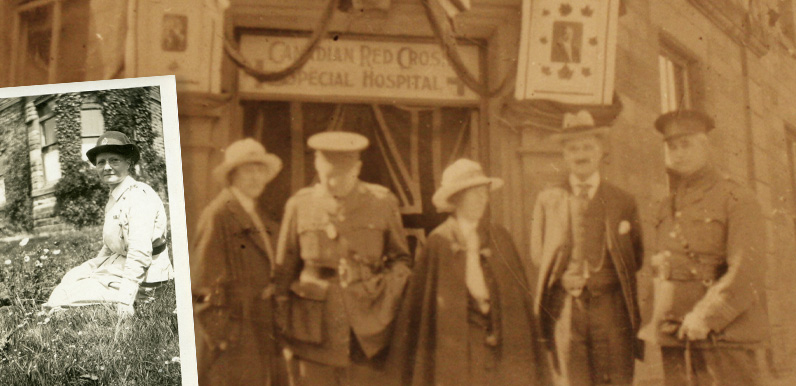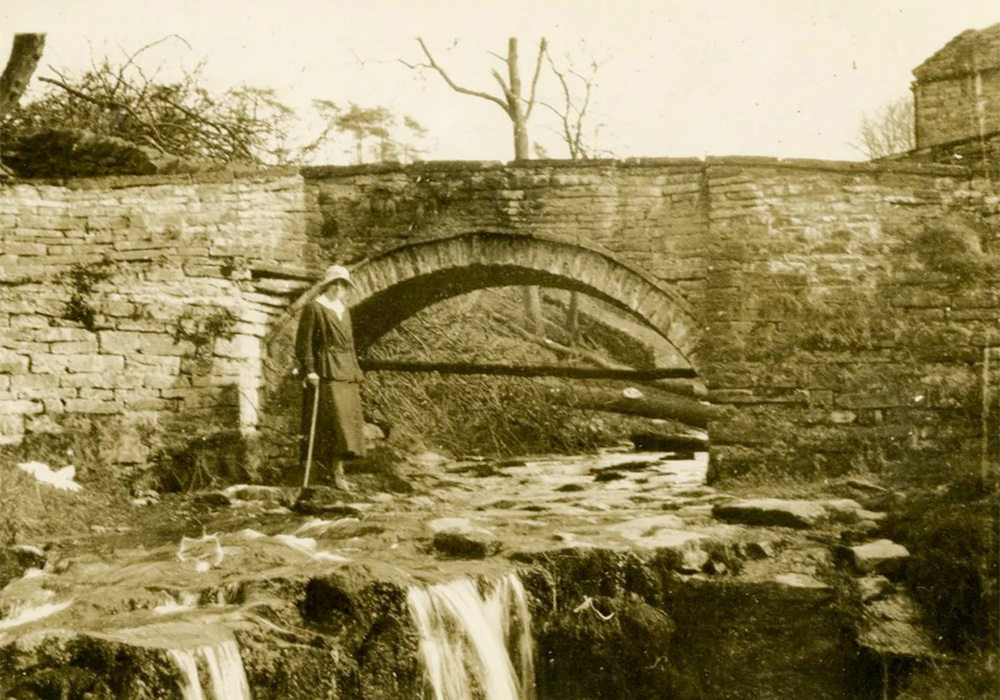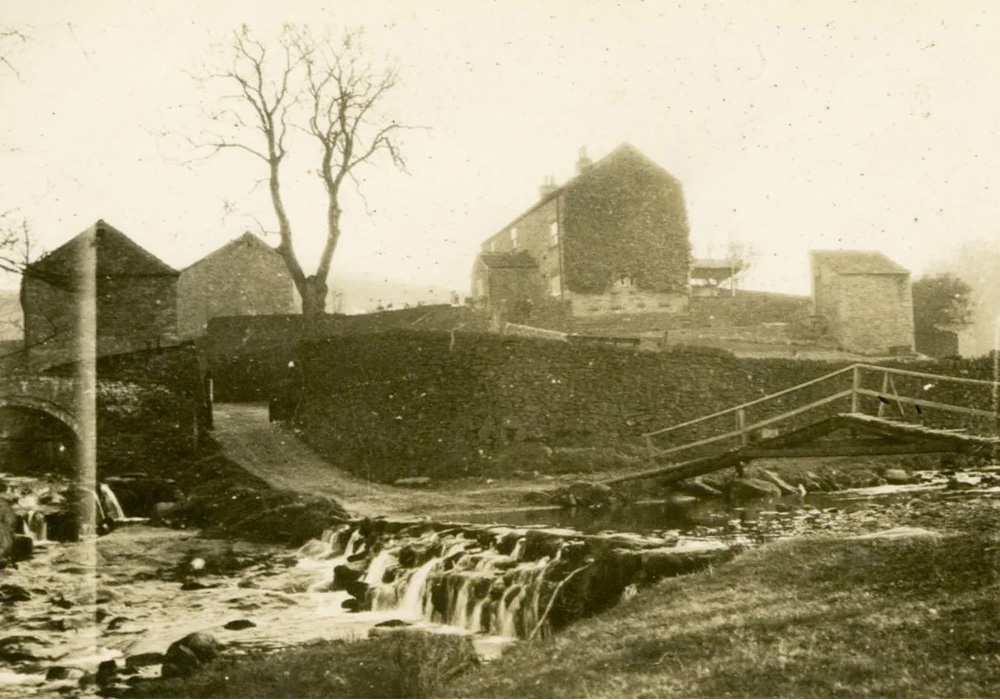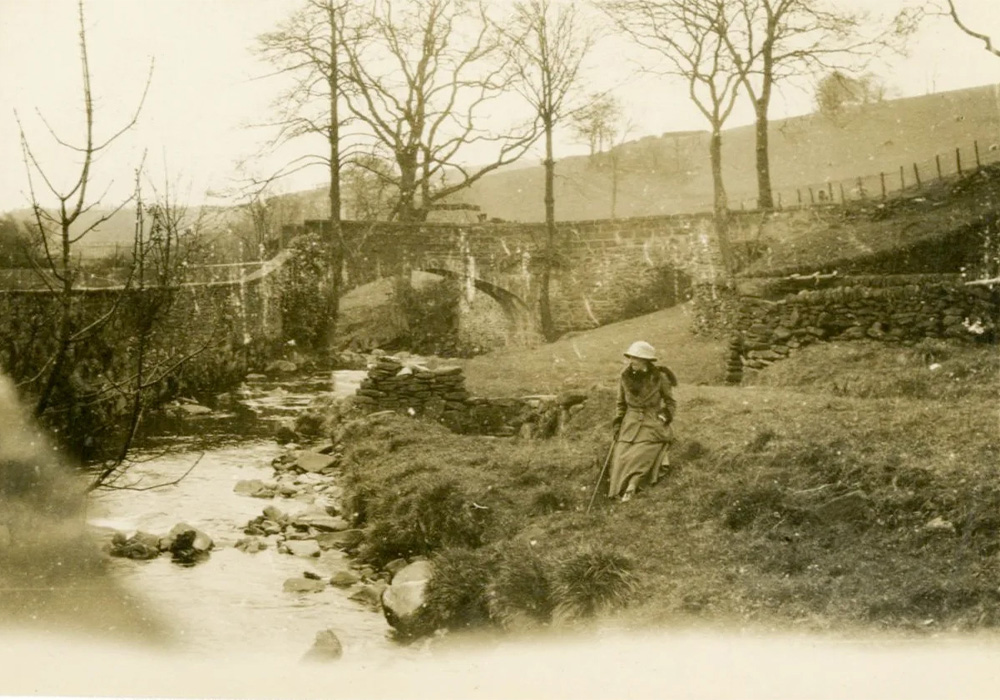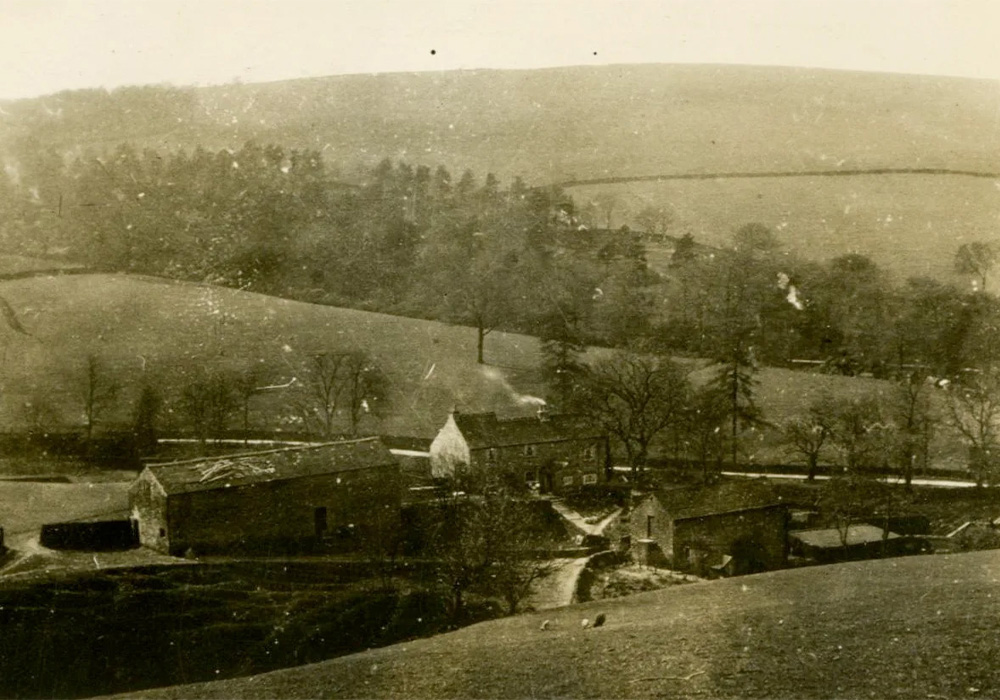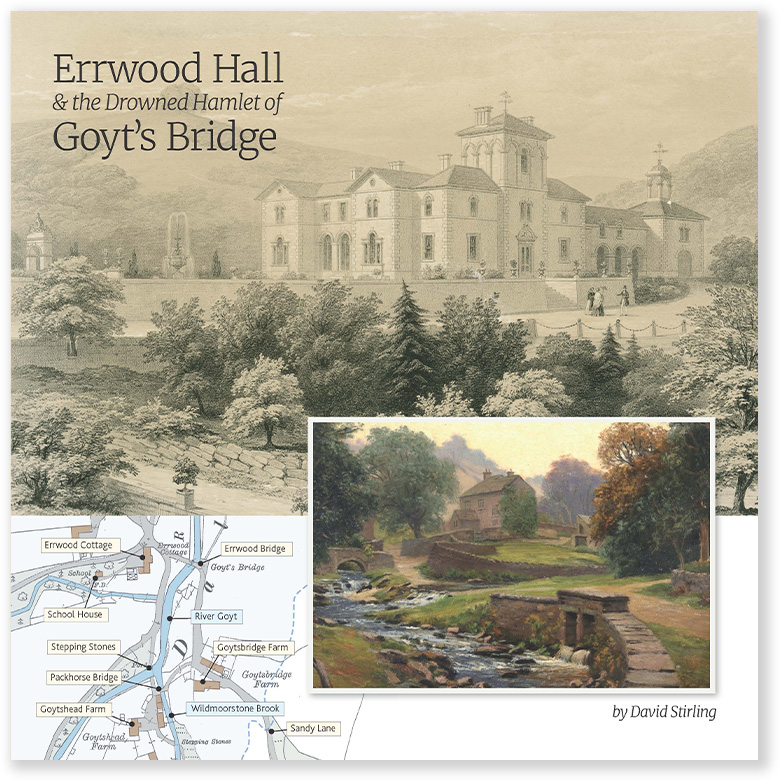Above: I’m not 100% sure, but I think Alfreda may be centre of this group pictured on the steps of the Granville Hospital in 1918. Inset is Nick’s photo of Alfreda sitting in the garden of his childhood home.
Many thanks to Nick on the Goyt Valley Facebook Group for posting the four photos below. They were taken during a Canadian nurse’s visit to Goyt’s Bridge in 1918. He explains:
I’ve quite accidentally stumbled upon some rather nice photos of Goyt’s Bridge from 1918. They’re from the HSC Winnipeg Archives/Museum.
The photos were taken by (and of) a Canadian nurse called Alfreda Attrill who was posted at the Granville Canadian Special Hospital in Buxton during WW1.
I’ve included a photo of Alfreda sat on the lawn in my garden (she was billeted at my house!). Click here to read more about Alfreda and her time in England.
The photos were taken in the now-submerged hamlet of Goyt’s Bridge, which now lies beneath the southern end of Errwood Reservoir, and include both bridges as well as the stepping stones over the Goyt.
There’s also a view that I’d never seen before looking west across the hamlet showing Goytshead Farm and its two large barns, with the lane from Goytsclough behind. Errwood Hall is hidden in the trees in the far distance. (Click any photo to enlarge.)
Alfreda Attrill
Born in Ontario in 1877, Alfreda enrolled in the Winnipeg General Hospital of Nursing in 1906, before joining the Canadian Army Medical Corps in 1914. She served in France and Salonika before embarking for England the same year.
The HSC website includes some of her diary entries written as she crossed the channel, heading towards Plymouth:
Heard the call this morning at 6 a.m., “Land in sight.” At 8:30, “full steam ahead,” was the order. Sighted land at 9:30 a.m. Attended lecture on “Water and Water Supply to an Army,” given by Lieut. Col. Nasmith, of Toronto, afterwards was given a lecture by Matron MacDonald, on “Nurses’ Duties,” etc.
Not yet tired, went to lounge and heard Lieut.-Col. Jones give a lecture on field hospital to the officers. After luncheon, entered the harbor of Plymouth, a tug coming out to meet each transport. Slowly we moved up to anchor.
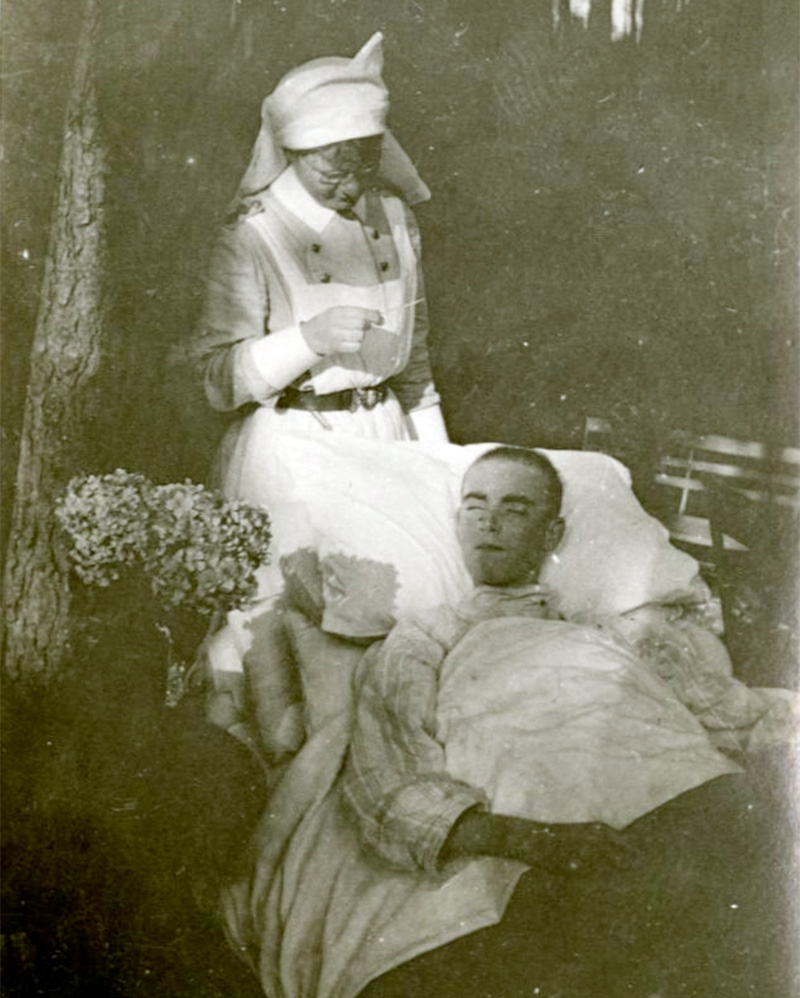
Above: A poignant photo of Alfreda taking the temperature of a wounded soldier somewhere in France. It looks like he’s been placed outside to enjoy the sunshine.
It wasn’t long before Alfreda was posted back to France to care for Canadian soldiers injured in the fierce fighting. In 1917 her diary shows that she was recuperating in Malta (it doesn’t say from what), before being posted back to England the following year, first to Basingstoke Hospital, and then Buxton.
I hadn’t heard of the Granville Canadian Special Hospital before, but a search on Google reveals that it was in the building which today houses Buxton Museum on Terrace Road. (Click here for more on the hospital.)
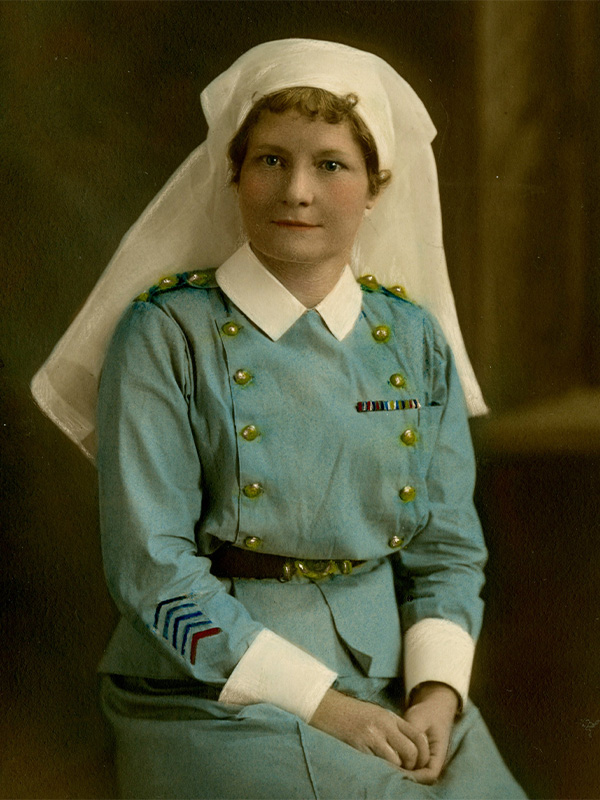
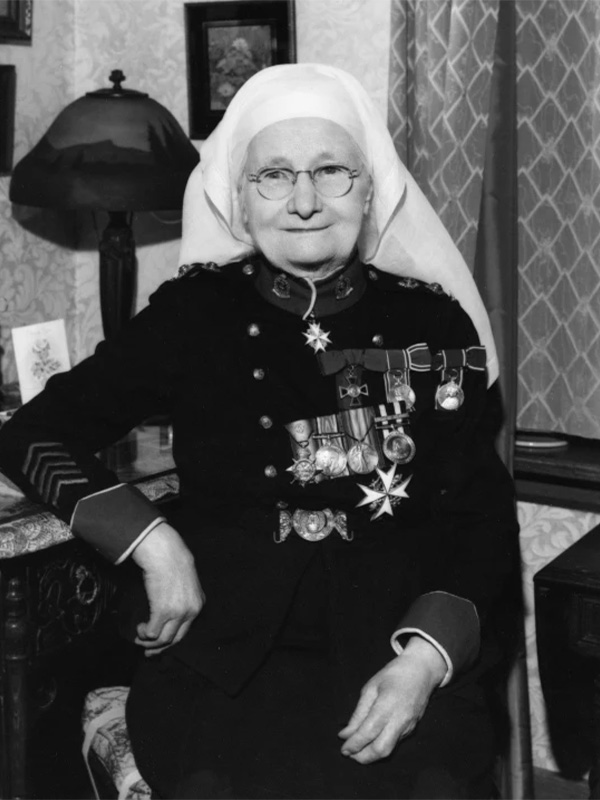
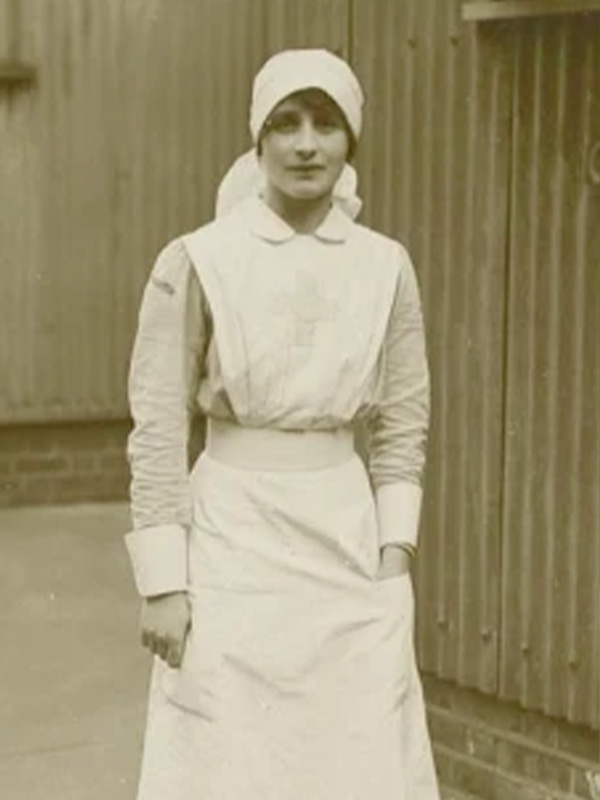
Above (from left): A portrait of Alfreda when she was still quite young, and then in later years displaying her many medals. Vera Brittain (mother of Labour politician Shirley Williams) is far right.
Vera Brittain
I wonder whether Alfreda may have met Vera Brittain during her time in Buxton. Vera lived in Buxton and was also a nurse. She wrote a best-selling memoir, Testament of Youth, about the war, during which she tragically lost both her fiancé and her brother. (Click to read a poem written by her fiancé which may have been about a visit they once made to the valley.)
Alfreda returned to Canada in 1919, and after a long and distinguished nursing career, passed away in 1970 at the age of 97.
Page update: After publishing this post I realised that one of the four photos came frustratingly close to revealing a feature marked on old maps of Goyt’s Bridge that I’ve often wondered about. Click to read.
